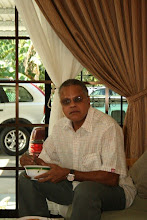The ladder diagram (also called a laddergram) remains a popular visual aid when graphically representing the mechanism of arrhythmia. It disentangles atrial and ventricular electrical activity and gives explicit representation to the sinoatrial and atrioventricular nodes.
More than 100 years after the first published ladder diagrams, this report reviews their origins, development, and limitations. Ladderlike diagrams have existed since 1885, first applied to venous and arterial pulsation timing or waveform tracings and later in 1920 alongside electrocardiograms to explain the generation and propagation of electrical impulses in the heart. Let us look at PAC s.
Premature atrial complexes
Occur as single or repetitive events and have unifocal or multifocal origins.
The ectopic P wave (called P’) is often hidden in the ST-T wave of the preceding beat. (Dr. Marriott, master ECG teacher and author, likes to say: "Cherchez le P on let T" which in French means: "Search for the P on the T wave", but it’s more sexy in French!)
The P’R interval is normal or prolonged because the AV junction is often partially refractory when the premature impulse enters it.
PAC’s can have three different outcomesdegree of prematurity (i.e., coupling interval from previous P wave), and the preceding cycle length. This is illustrated in the "ladder" diagram where normal sinus beats (P) are followed by three possible PACs; in the diagram the refractory periods of the AV node and bundle branches are indicated by the width of the boxes):
Let me show Laddergram:
:
 |
A "ladder" diagram is an easy way of conceptualizing the conduction of impulses through the heart, and the resulting complexes (i.e., P waves and QRS waves).
Outcome #1. Nonconducted (blocked); i.e., no QRS complex because the PAC finds AV node still refractory. (see PAC labeled ’a’ in the upper diagram 1)
Outcome #2. Conducted with aberration; i.e., PAC makes it into the ventricles but finds one or more of the conducting fascicles or bundle branches refractory. The resulting QRS is usually wide, and is sometimes called an Ashman beat (see PAC ’b’ in diagram 1)
Outcome #3. Normal conduction; i.e., similar to other QRS complexes in the ECG. (See PAC ’c’ in the diagram 1)



0 comments:
Post a Comment